Meejung Lee Art Gallery
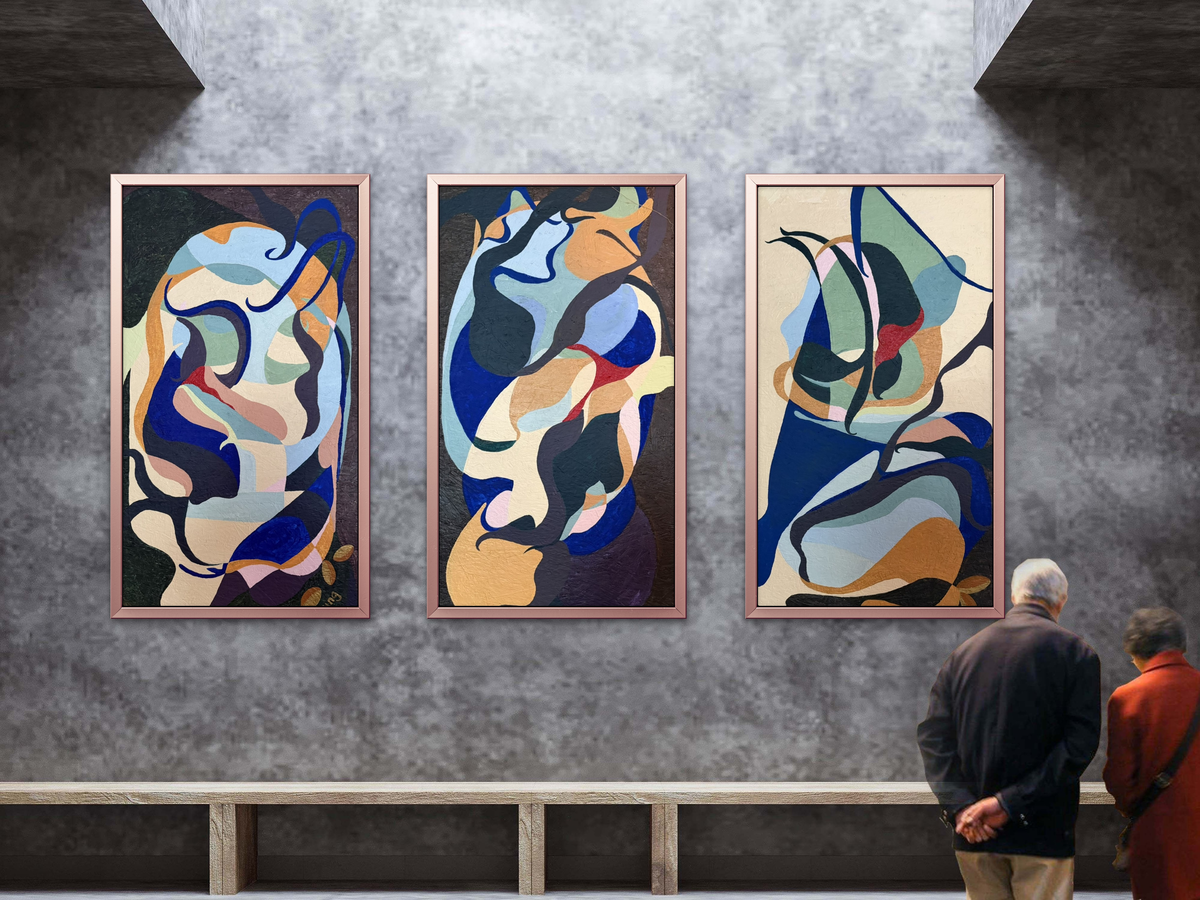
This “Rhythm of the Wave” series of 24 x 48 inch paintings, previously exhibited at the Long Beach Cultural Center, is an exploration of organic movement and internal rhythm. The compositions are dictated by curves, not straight lines, conveying a sense of flowing, wave-like rhythm. The wooden panel is an integral part of the artwork. Its visible grain and natural splits are not defects but contributors to the texture and overall narrative, providing a solid, earthly foundation for the fluid movement painted upon it. This juxtaposition of the hard, static wood and the soft, flowing rhythm of the acrylic paint is central to the series’ theme.
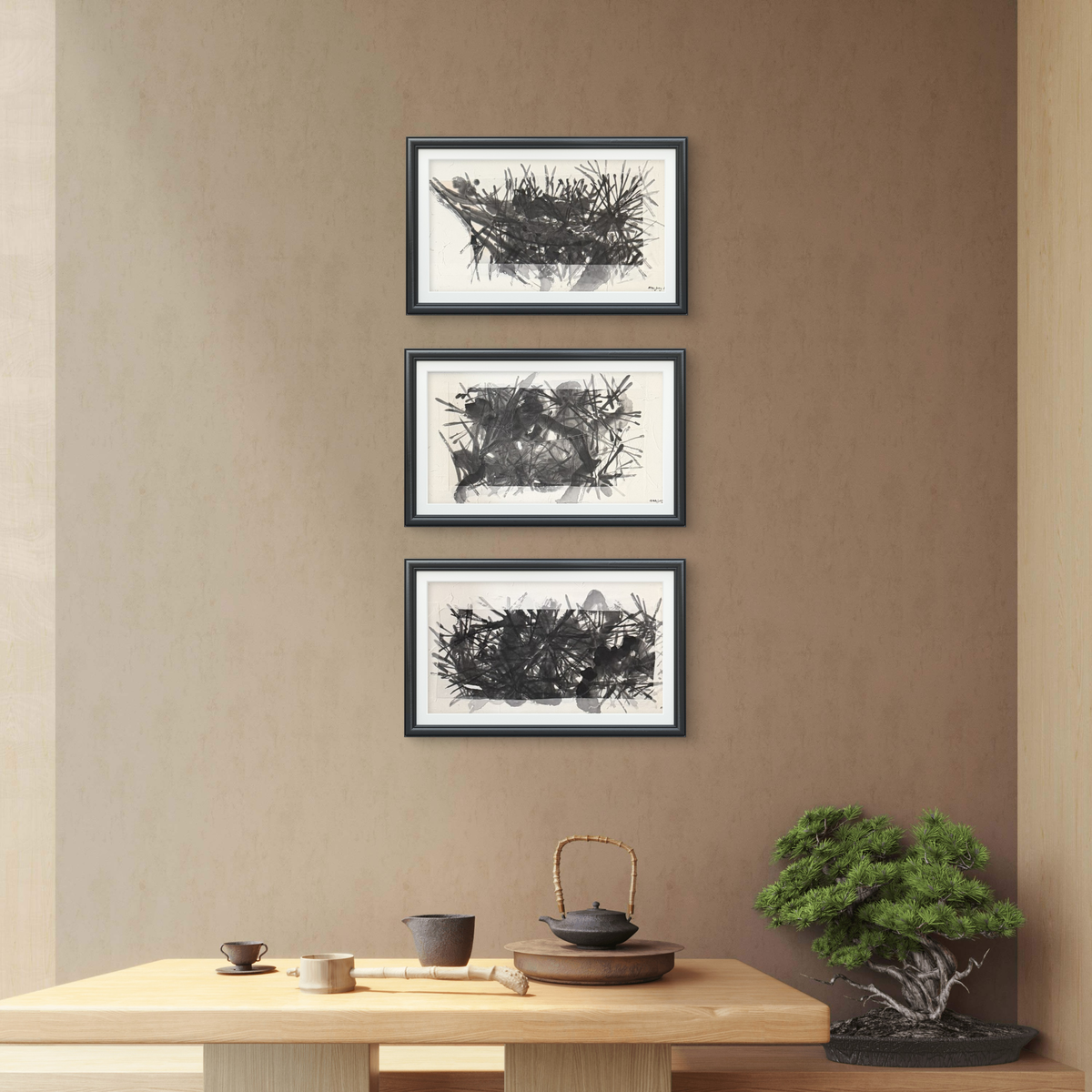
This “The Mind’s Pine” series is an abstract exploration using the tradition of Asian brush painting. I began by drawing the pine tree—a symbolic anchor representing constancy, integrity, and resilience—on delicate rice paper. The final work then adheres this paper to a canvas, bridging the traditional world of sumukhwa with a contemporary form.
The abstract forms are created by viewing the pine “through the window of mind,” translating internal perception rather than external observation. The power of the work relies entirely on the Asian brush and ink (먹).
In this visual language, black speaks of infinite depth, and white holds the silence of space. This expressive use of ink presents a spiritual self that remains constant, even amidst chaos.
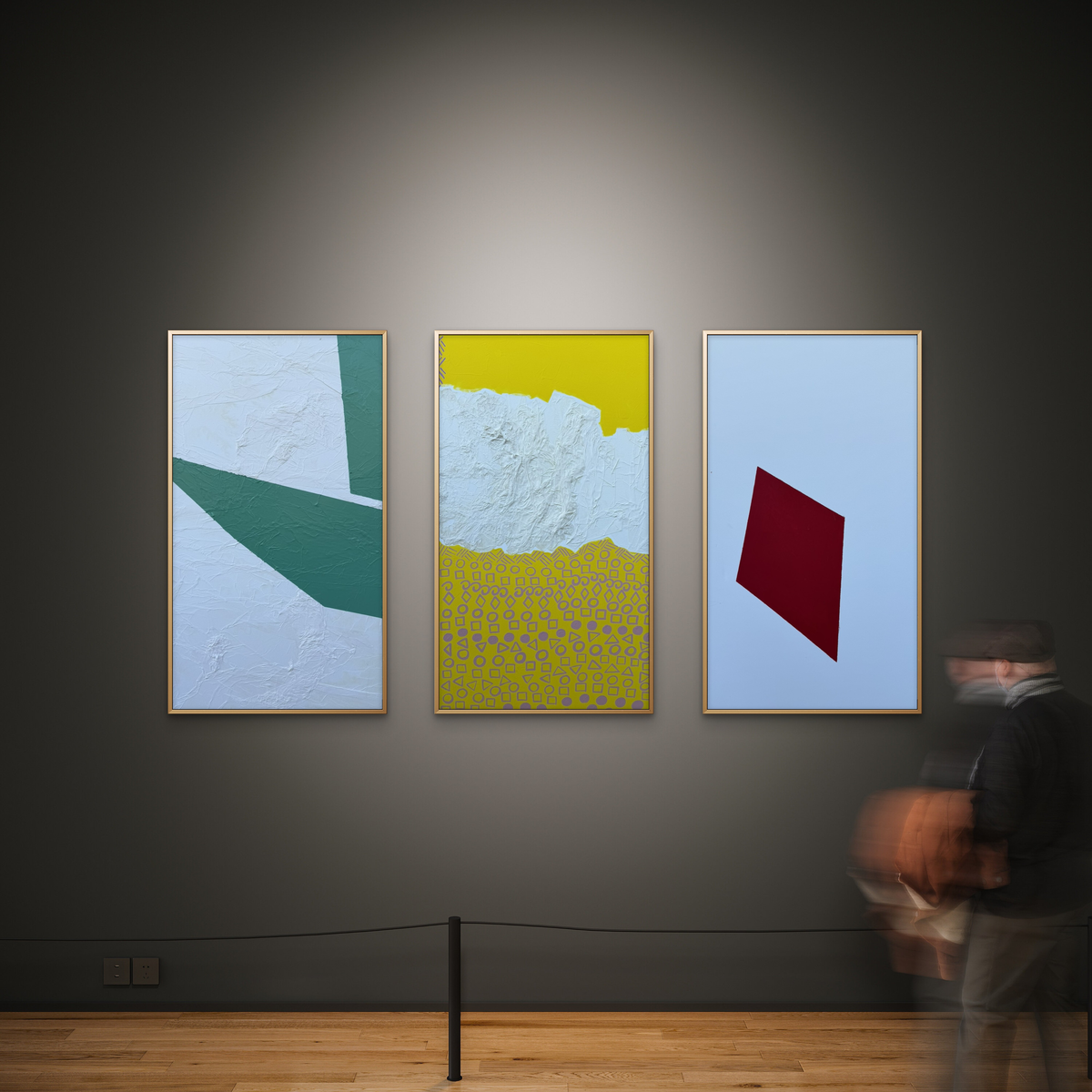
The “Zen Geometry, Lived Surface Series” explores the dynamic conversation between structure and experience. It is defined by an approach that merges the stark clarity of Zen-inspired geometry with the complex, organic texture of the “Lived Surface”.
The artwork is anchored by bold, simple lines, curves, and basic shapes—the Geometry—which serve as a visual thesis on empowerment, representing the essential, clarified truths of the self and the mind’s internal architecture. This intentional structure echoes the meditative spaces and compositional discipline found in Asian art and philosophical thought.
In profound contrast, the surface is built up using organic materials, primarily rice paper or Hanji, meticulously layered to create a tactile, three-dimensional topography. This Lived Surface of ripples, peaks, tears, and valleys is an active metaphor for the unpredictable landscape of human existence: the complexity, vulnerability, and resilience encountered on life’s path.
The resulting work is a powerful dialogue: a place where the deliberate, chosen lines of the self meet the beautiful, imperfect texture of a life lived, finding balance between the geometry of the mind and the soul of the journey.
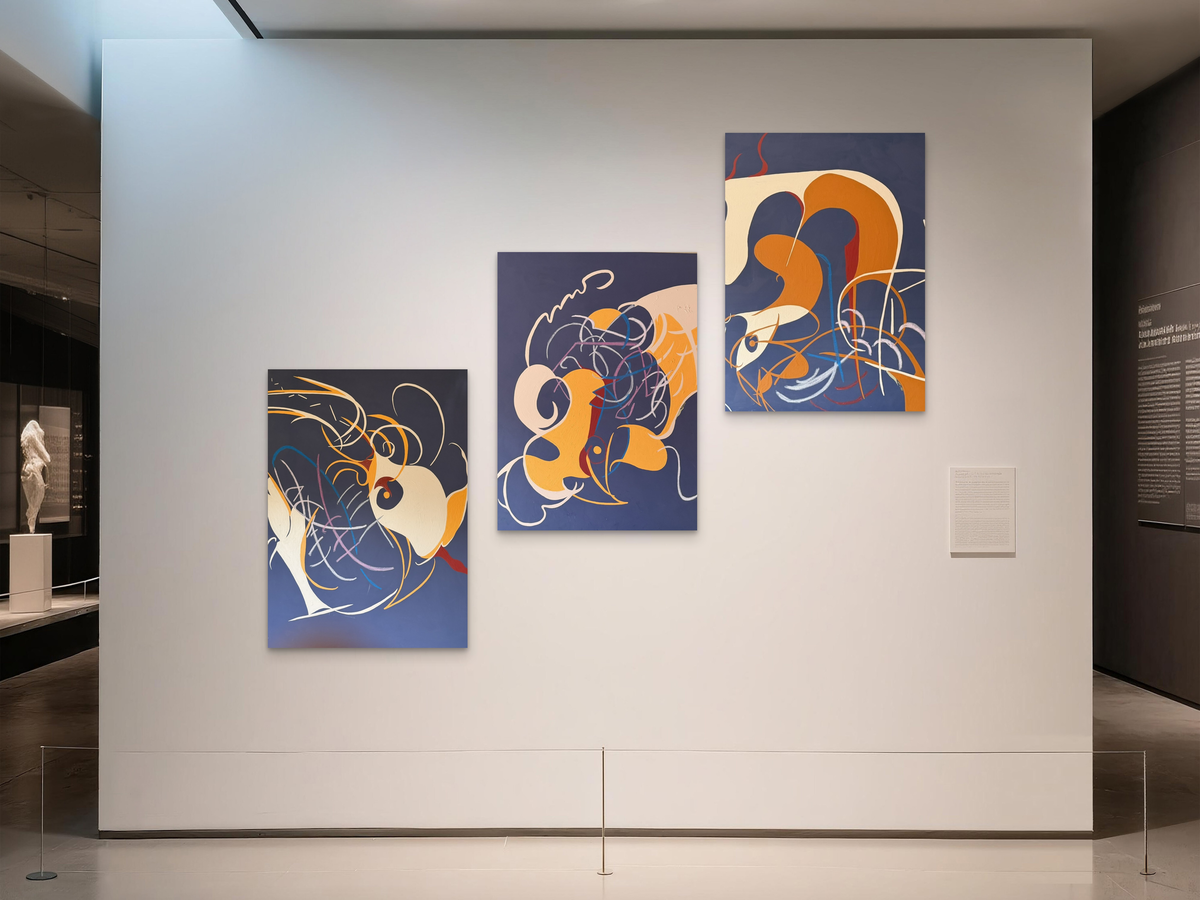
This abstract work “Essence in Flight: Choreography of Joy Series” is dedicated to the vibrant legacy of the chickens and roosters who have filled our home over the years, embodying constant happiness, infectious smiles, and powerful encouragement in our family’s daily life.
The entire composition is a study in perfectly representative color. I painstakingly mixed and chose a specific palette to capture the spirit of the flock, translating their physical presence—the sharp line of the comb (벼슬), the curve of the beak (부리), the focus of their speaking eyes, and the dynamic motion of their feathers and feet (닭발)—into a language of pure, dynamic force.
The energetic white, orange, and gold forms are the spirit of the flock in full flight. They represent the accumulated energy, rendered as Lived Lines and abstract planes that chart the Choreography of Joy—the complex, beautiful movements and disruptions they brought to our home. By using radical abstraction and this highly deliberate mix of color, I elevate their physical reality into an unbound and dynamic force—a continuing source of essential, shared joy.
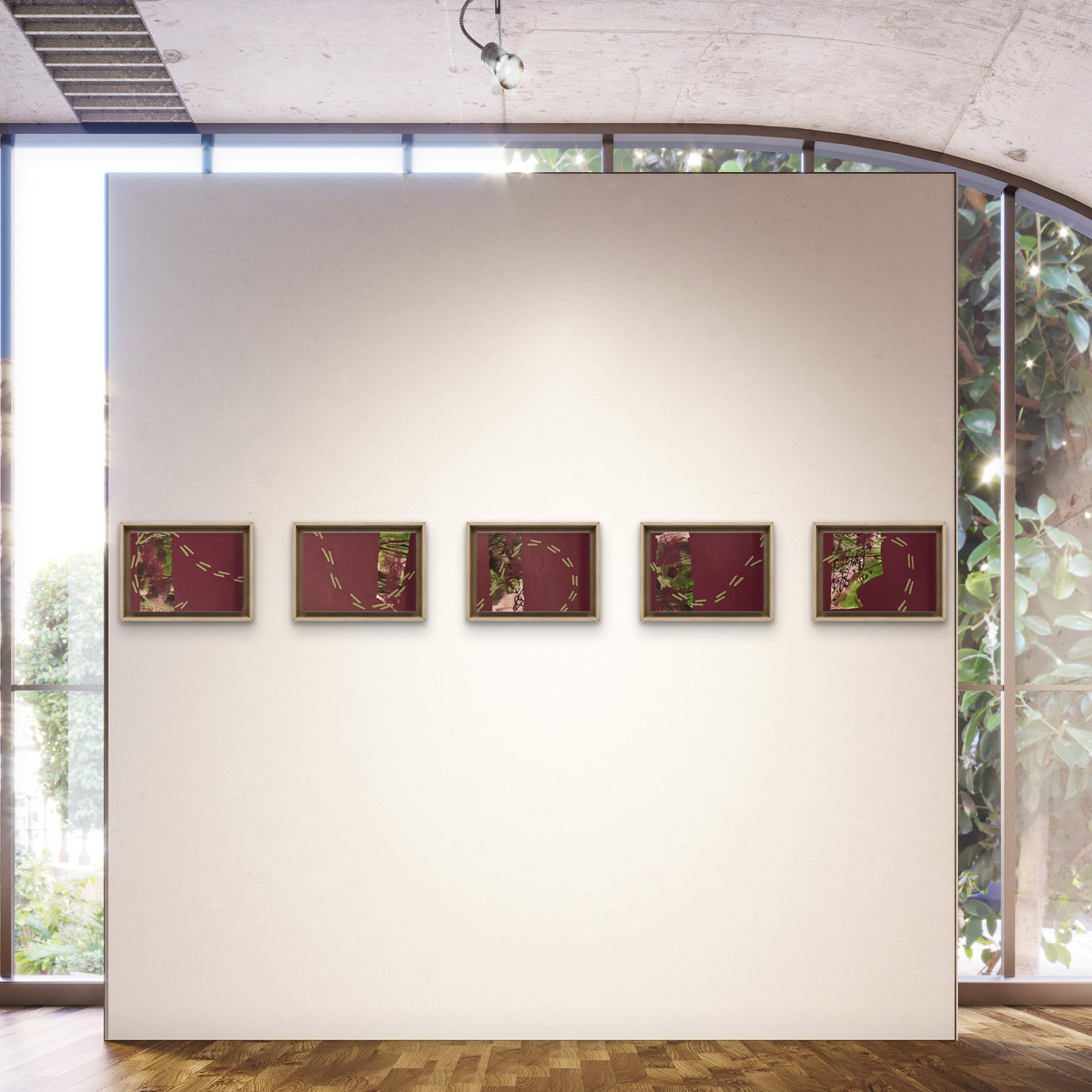
This “Chopsticks Series Connection of Life”, 12 x 9 inch works, was previously exhibited at the Korean Cultural Center in Los Angeles. It is a visual tribute to companionship and the vibrant energy of renewal.
The creation process is a blend of traditional and contemporary methods. The base features ink on delicate rice paper. I applied the vibrant green hue directly to the paper to express the raw vitality and force of Spring. The paper was then carefully adhered to the canvas using a natural tapioca starch mixture, binding the tradition of sumukhwa to a modern support.
The recurring form of the chopsticks transcends mere utility. They symbolize the deep cultural connection inherent in sharing life and meals in Korean tradition, representing lifelong companionship. The abstract trajectory formed by the chopsticks suggests the enduring bond of relationships that weave through complexity, guiding and sustaining one another on the journey of life.
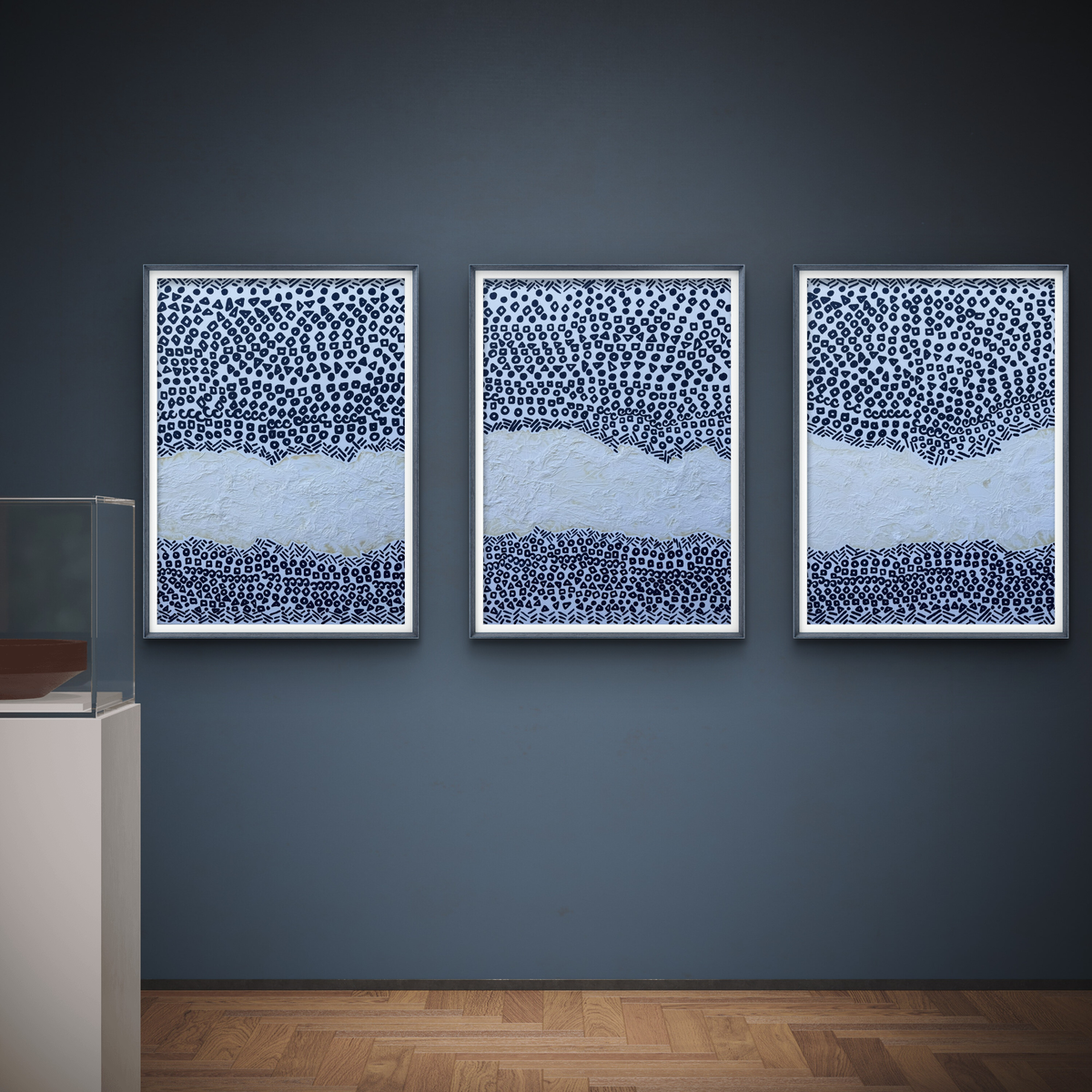
The “Life’s Geometry Chopsticks Hanji and the Path of Survial” series, 48 x 60 inch acrylic on canvas, stands as a foundational masterpiece, integrating the structure of modern abstraction with profound Korean cultural philosophy. The work explores the innate human drive to not just endure, but to thrive within the complexity of life.
The composition is anchored by stark, basic black geometry—pure forms that represent essential truths and the foundational structure of the world. Flowing dramatically through and around this structure is a dense, organic cluster of rice paper (Hanji). The paper is intentionally manipulated to form a vast, undulating landscape of peaks, valleys, and fierce terrain, visually illustrating the rough, unpredictable journey of human life.
Crucially, these geometric forms are surrounded and framed by chopsticks. In this context, the chopsticks symbolize a core Korean belief in the strength required for survival. They are the essence of sustenance, providing not only the physical food we need but also the food for thought, strength, and courage necessary to navigate the perilous path shown in the Hanji. This spiritual nourishment enables us to continually forge new, unique journeys, which are themselves represented by the infinite, singular formations and textures within the rice paper clusters.
This piece is a powerful visual paradox: a testament to the essential resilience that allows the spirit to flow, survive, and create beauty even when traversing the most challenging terrain.
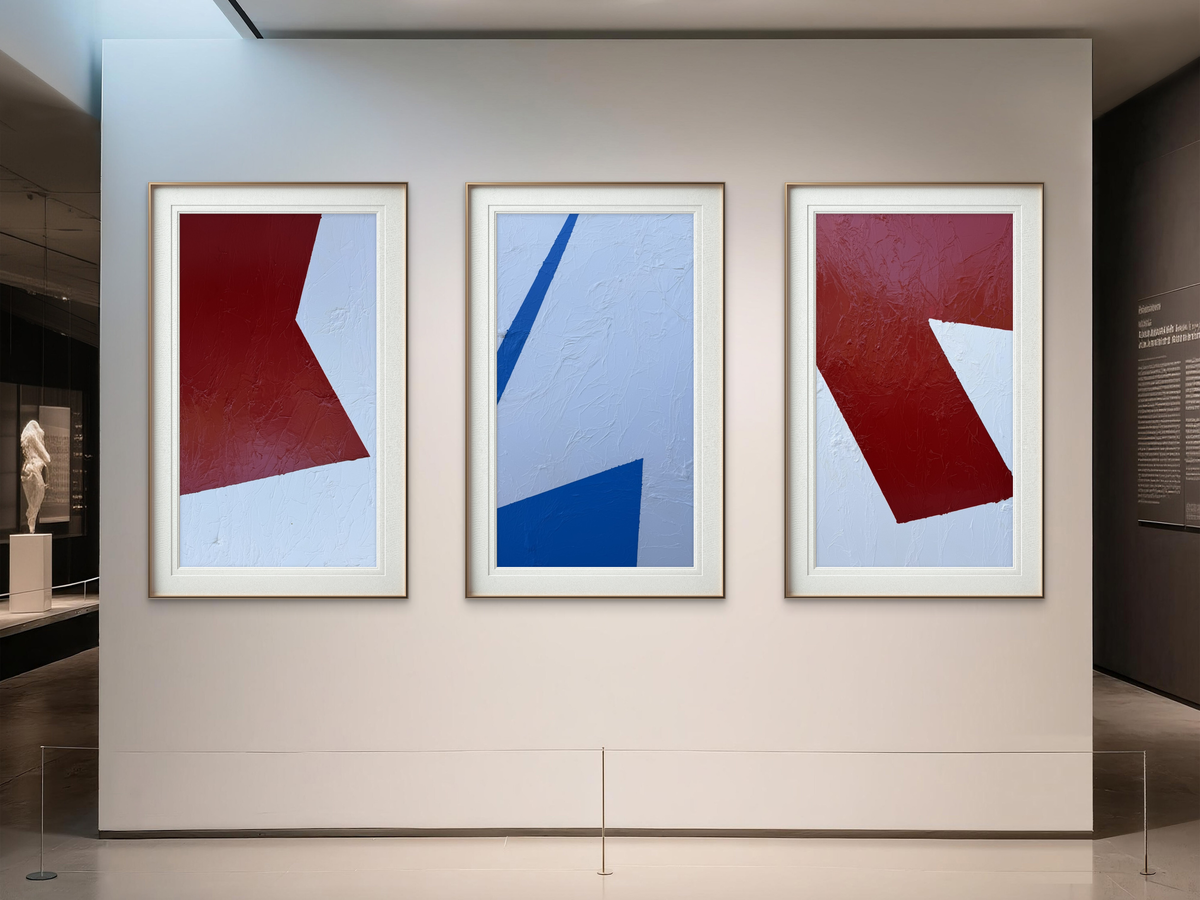
In the “Cartography of the Self Series”, across a generous 36×48 inch canvas, acrylics meet the memory of a journey. My earliest devotion to fine art and the earthiness of ceramics has, over time, found its resonance in the meditative spaces of Asian art. This painting is the nexus of that path.
Here, a stark and unwavering geometry of lines and basic shapes anchors the composition—a visual thesis on empowerment. These clear, bold forms represent the essential, simplified truth that allows one to stand resolute in a complex world.
Yet, this clarity is intentionally unsettled. Into the surface, delicate rice paper is meticulously integrated, crinkling and shifting across the paint. This is more than texture; it is a second, organic geometry. The paper’s surface forms a miniature landscape of its own: high peaks, low valleys, rippling waves, and torn edges. These tactile, imperfect contours stand in profound contrast to the painted lines, offering a visual metaphor for the varied landscape of human existence. They embody the happiness, sorrow, vulnerability, and resilience—the complete, imperfect spectrum of life encountered on our shared path.
This artwork, therefore, is a dialogue: a conversation between the strong, chosen lines of the self and the unpredictable, beautiful texture of a life lived. It is where the geometry of the mind meets the soul of the journey.
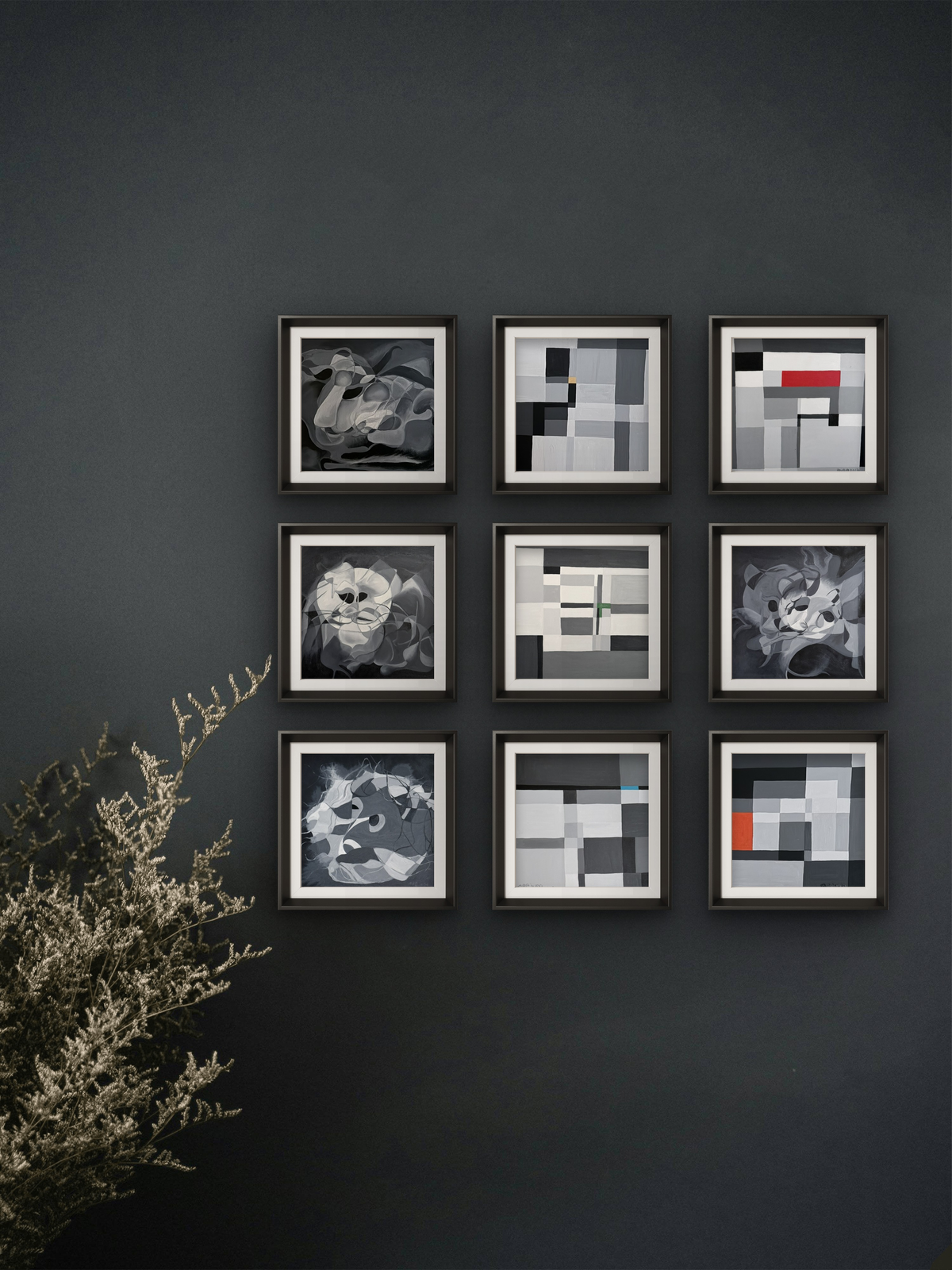
Abstract Awakening Series: this collection of nine small-scale oil paintings, previously exhibited at the Long Beach Cultural Center, marks a critical turning point—my first committed foray into abstract art.
The series was executed primarily in black and white oil paint, created through an intense, month-long process of constant reworking and all-night sessions of correction. Initially inspired by the forms of animals like the lion and tiger, the resulting shapes quickly evolved into complex, layered abstractions.
Recognizing the overall complexity of the early pieces, I integrated a smaller sub-series of geometric compositions. To punctuate the stark black and white, small touches of red, blue, and gold were added as emotional focal points. This process ultimately enabled me to realize that each piece should be a personal reflection of my internal state and mood—a commitment that now defines my abstract practice.

“Dawn’s Topology: Geometry of the Mind”, 47 x 58 inch canvas artwork, is a masterwork exploring the structure of time and the creation of a geometry that is purely mental. It is a world built from the raw topology of existence, expressed through strong strokes of Hanji (Korean rice paper) and the subtle flow of Asian watercolor.
The core of the work lies in the topological shapes formed by the Hanji. These forms—the mountainous streaks and uneven edges—are not merely texture; they are the visual representation of stories and moments from an earlier time and space, the structural remnants left by past residents.
The colors, applied with Asian brush watercolor and minimal water, speak to a transformative time: the moment of dawn as the sun rises. The gentle, transitive nature of the paint, without the typical diffusion of water, allows for a new, dry geometry to emerge—a structure that defies our modern, Euclidean understanding of form. This is the geometry that only exists in mind: a powerful, dimensional landscape where the past and present coalesce on the textured plane of consciousness.
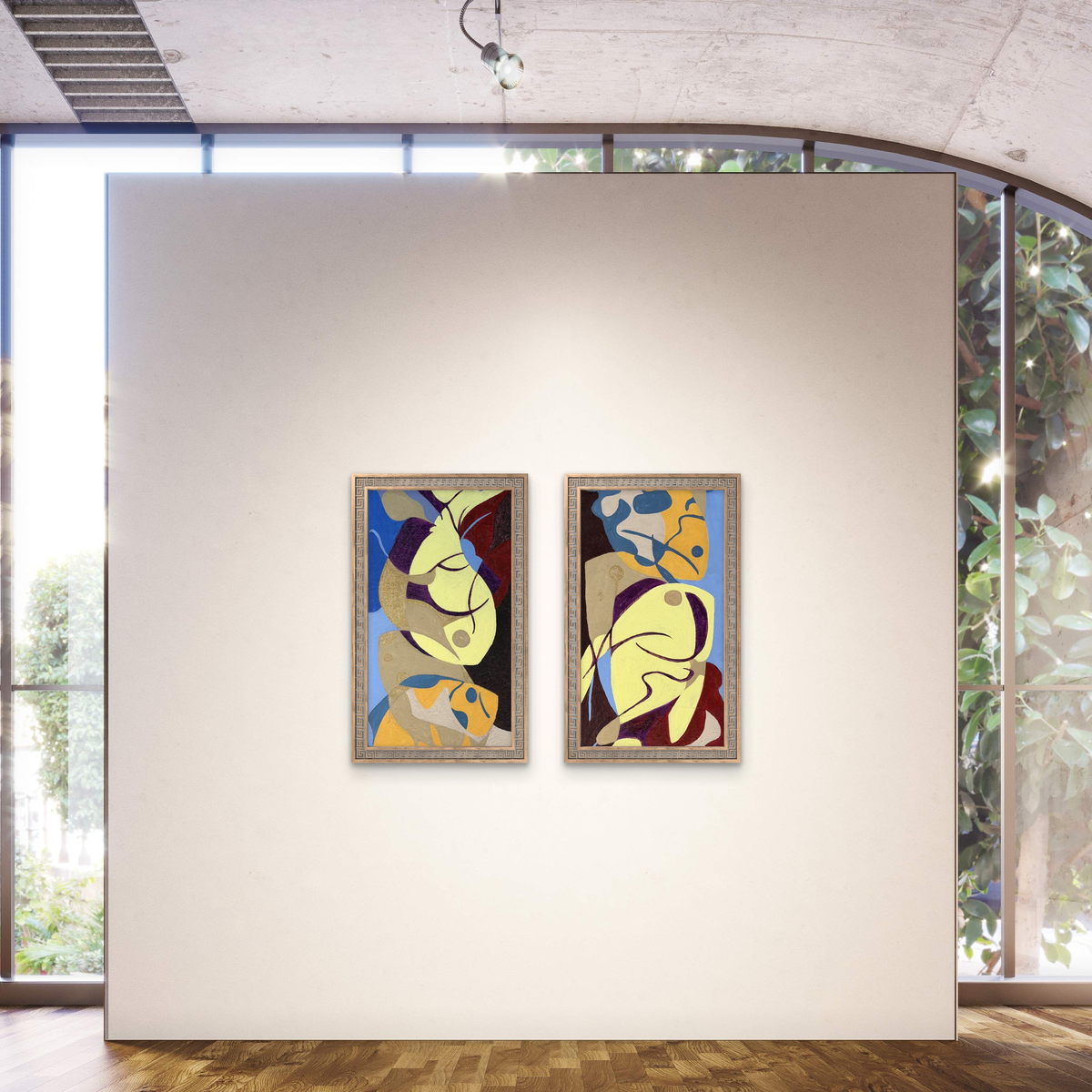
“Unseen Flow”, this painting emerged from a spontaneous moment, executed on a simple wooden panel from Home Depot, allowing the humility of the material to ground the expansive nature of the subject. My intent was not to merely depict fish, but to capture their true essence: unseen journeys, shared existence, and the perpetual motion of life.
The composition uses the abstract forms of the fish to chart the dynamic flow of their existence. These overlapping, vibrant shapes—rendered in yellows, golds, and blues—are the visual representation of their perpetual movement, a continuous, fluid narrative.
Their eyes, often the sharp centers of these forms, symbolize a profound, distinct perception. They are the organs that allow the fish to see an unseen world—a realm of travel and perspective that remains inaccessible to the human mind.
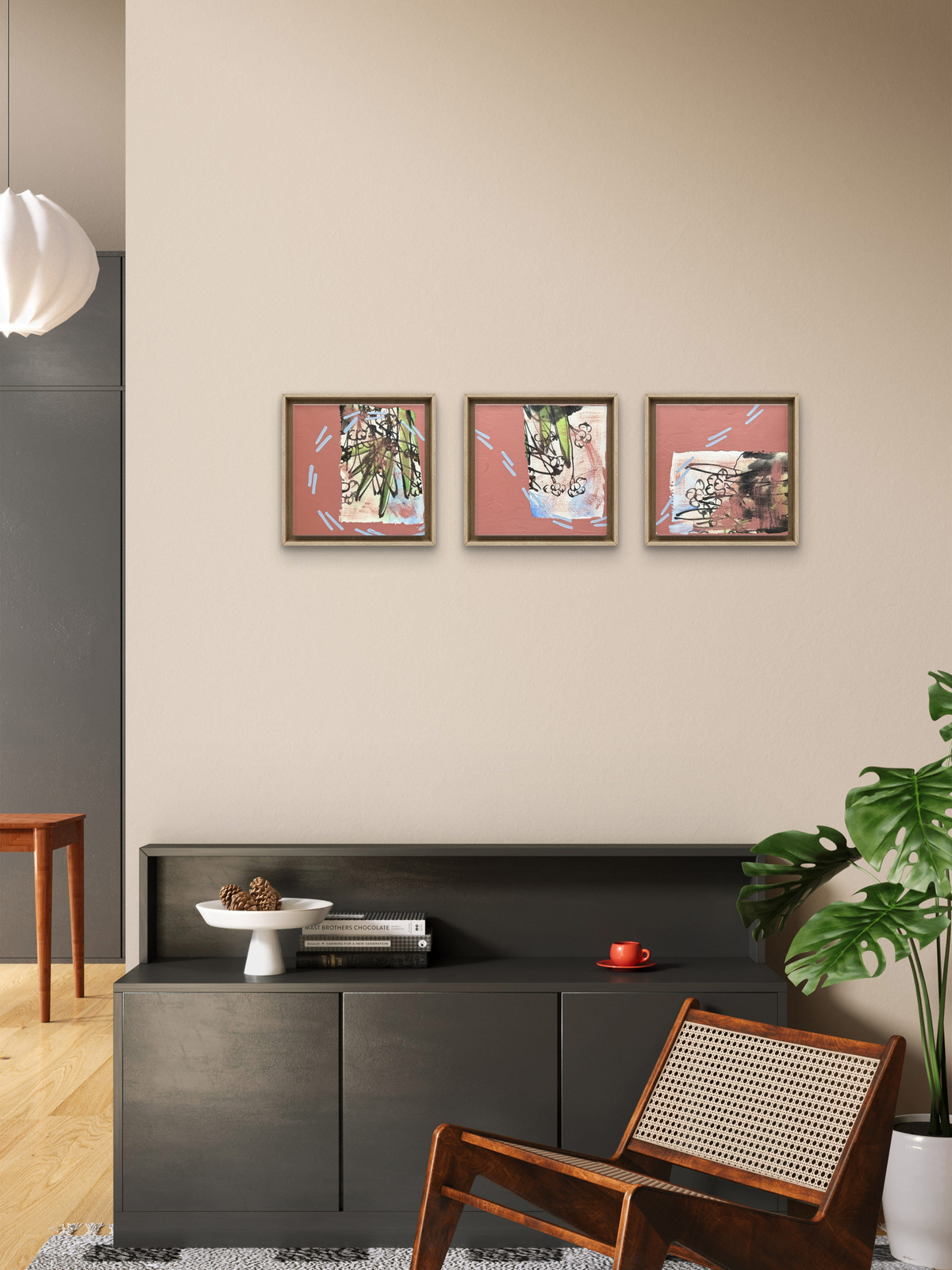
“Unseen Flow”, this painting emerged from a spontaneous moment, executed on a simple wooden panel from Home Depot, allowing the humility of the material to ground the expansive nature of the subject. My intent was not to merely depict fish, but to capture their true essence: unseen journeys, shared existence, and the perpetual motion of life.
The composition uses the abstract forms of the fish to chart the dynamic flow of their existence. These overlapping, vibrant shapes—rendered in yellows, golds, and blues—are the visual representation of their perpetual movement, a continuous, fluid narrative.
Their eyes, often the sharp centers of these forms, symbolize a profound, distinct perception. They are the organs that allow the fish to see an unseen world—a realm of travel and perspective that remains inaccessible to the human mind.
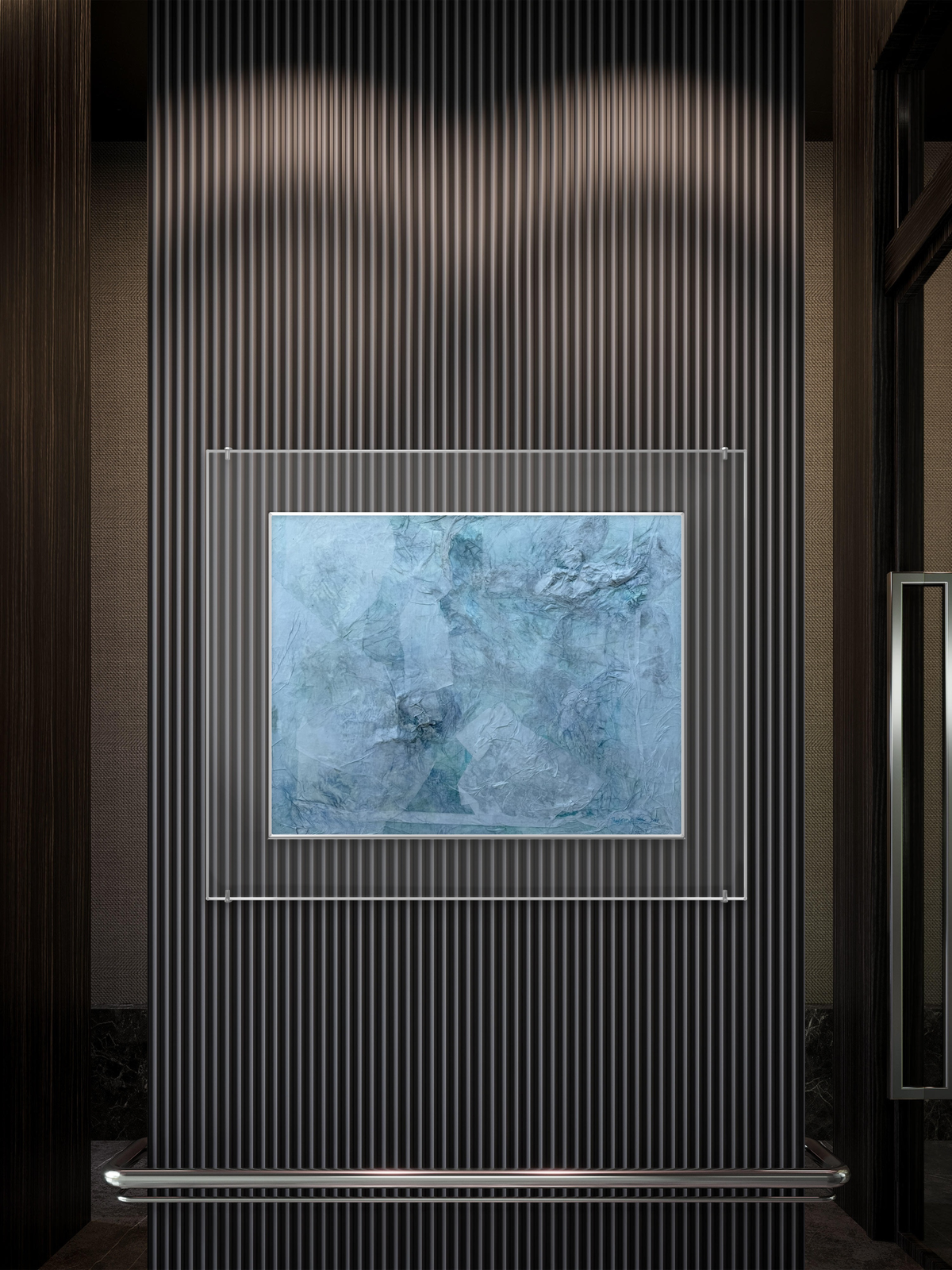
This evocative, “Memory’s Translucent Ocean”, 30 x 24 inch work uses Asian Watercolor on layered Hanji (Korean rice paper) to explore the vast, hazy, and ever-shifting nature of our personal past. The piece embraces subtlety and atmosphere, creating a profound sense of depth rather than sharp contrast.
The Hanji is applied in multiple translucent sheets, creating a dense, three-dimensional surface that both absorbs and filters the delicate watercolor. The blue and gray pigments, applied with the gentle flow characteristic of Asian watercolor, bleed through the paper’s ripples, transforming the canvas into a visual analogue for the deep current of reflection.
This layered surface visually represents the accumulation of our experiences. Each overlapping sheet is a layer of time, where past memories—some clear, some obscured—mix together. The softness of the color and the intricate texture of the Hanji perfectly convey how our emotional history is never static, but an ephemeral and complex wash of moments constantly shifting beneath the surface of the present.
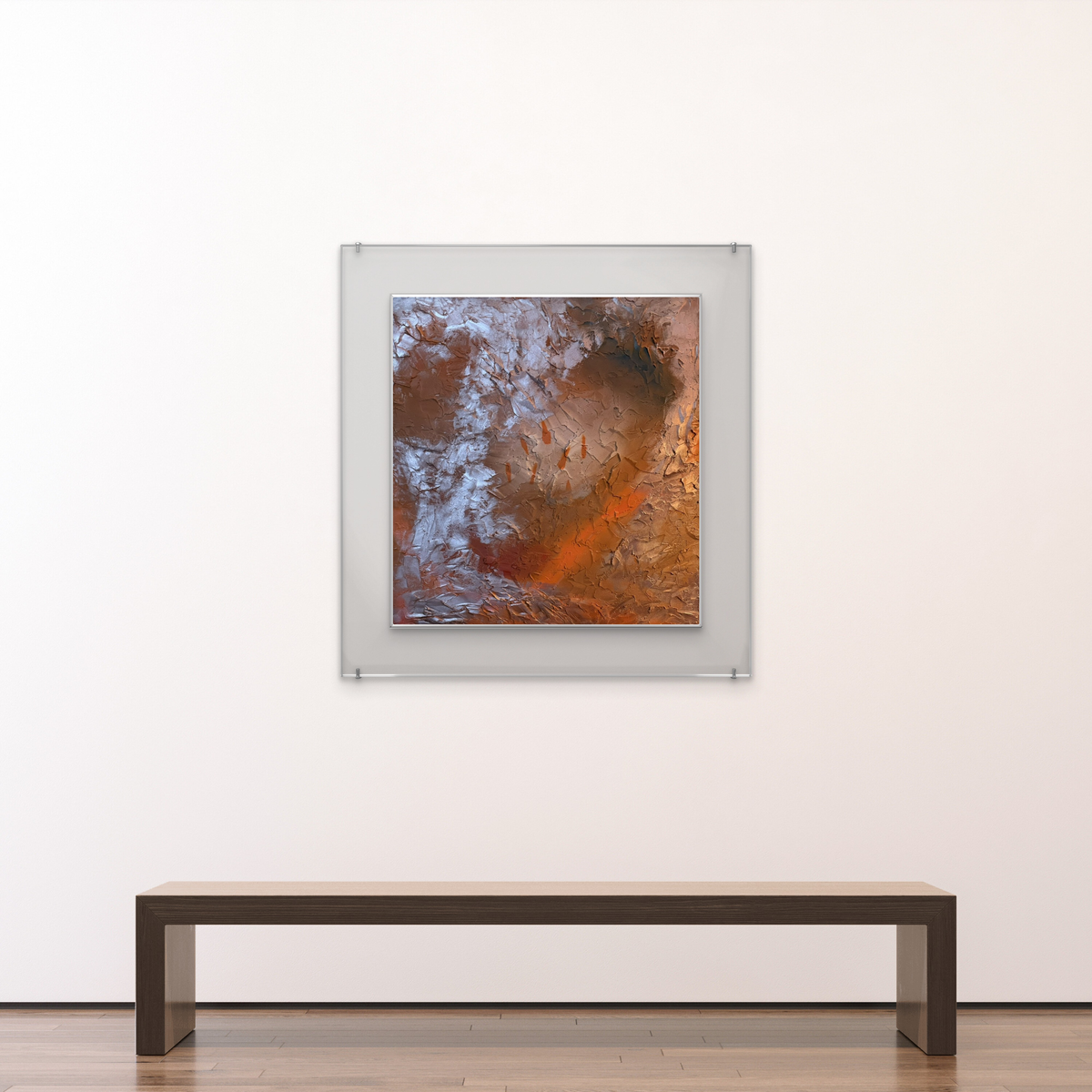
The “Seven Paths to Paradise” artwork is a solemn, mixed-media tribute to my late mother-in-law, celebrating her long life and dedication at the age of 94. It is dedicated to her spiritual journey, guided by the profound Korean Buddhist belief that the soul’s destination is determined within 49 days of death.
The central composition is defined by seven distinct lines, which symbolize the seven weeks or forty-nine days of the ascent—a direct honor to the 49th day ceremony (49제).
The background is a deeply layered, mystical space achieved through a combination of plaster, spray paint, and acrylics. The heavy plaster builds a tactile, substantial texture, representing the emotional weight and grounded reality of the transition. The spray paint and acrylics then create an ethereal atmosphere, depicting a realm of Mystery, Spirit, and Paradise (Geukrak). This painting conveys my fervent wish and faith that her soul finds a magnificent and peaceful reincarnation, serving as a deeply personal offering for her smooth, certain passage to the next life.

This dynamic 12 x 24 inch work, titled “Danpung” (Autumn Foliage: The Joy of Intensity), captures the intense, vibrant feeling of joy and fulfillment through a fierce geometric composition. The piece was previously exhibited at the esteemed Seoul Arts Center (예술의 전당).
The work is a visually ecstatic dialogue between intense red acrylic and the sculptural white texture of Hanji (Korean rice paper). The red, symbolizing the emotional intensity, vibrancy, and pure happiness of life—like the dramatic color of autumn leaves—is met by sharp, contrasting diagonals of white.
The white areas, built up with textured Hanji, represent Foundational Self and the Accumulation of Experience. They are not barriers, but structured planes that interrupt the red, allowing the joy to be processed, defined, and contained in powerful, geometric forms. This dynamic collision explores how pure, profound feeling (Red) interacts with the complex, layered landscape of our inner history (Hanji), resulting in a powerful and unapologetically joyful statement about the beauty of existence.
ARTist
Meejung Lee
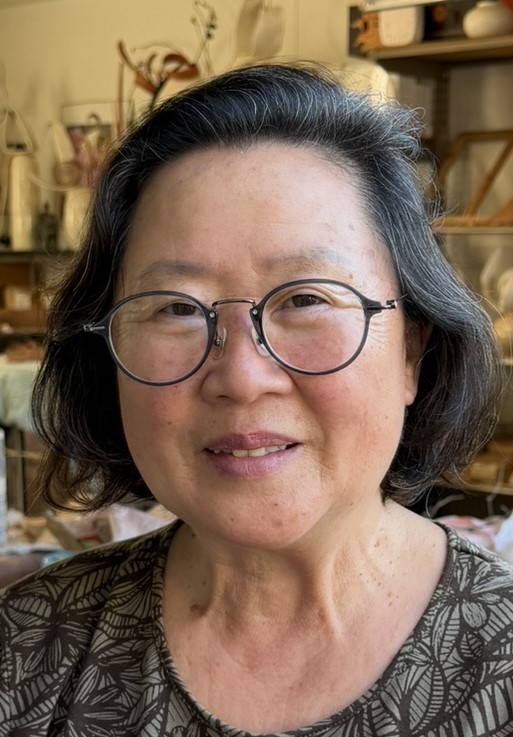
Across my works, I seek to give form to the invisible terrains of thought, memory, and spirit. My journey began in the tactile world of ceramics, where earth and fire shaped my early devotion to material truth. Over time, this foundation found resonance in the meditative language of Asian art—its restraint, rhythm, and reverence for process. On canvas, I explore the meeting of geometry and emotion: the disciplined lines of structure against the fragile, organic presence of Hanji and plaster. These materials, whether soft or unyielding, become metaphors for consciousness itself—resilient, imperfect, and constantly in dialogue with the world. Each piece is a field where clarity meets chaos, where devotion, joy, and memory take abstract shape. Whether capturing the inner architecture of tranquility or the exuberant spirit of a flock once at home in my life, my art is an ongoing conversation between order and surrender—a meditation on how beauty emerges through both control and release.
biography

Solo & Group Exhibitions (1982 – 2025)
- Member of the Southern California Korean Artists Association
- President of the Southern California Korean Catholic Artists Association
Art Instructor at La Mirada City Activity Center, CA, USA
Teaching Staff for Oil Painting, Chinese Brush Painting, Ceramics- Dankook University, Seoul, South Korea
Backleor & Master’s Degree of Fine Art (Ceramics)

“Meejung Lee’s body of work offers a truly unique intersection of traditional Korean materials and contemporary spiritual inquiry. Her artistry is defined by a singular vision that transcends time and medium, inviting the viewer into a space of profound memory and contemplative joy.
Central to her originality is the masterful incorporation of Hanji (Korean rice paper , “Hwaseonji”). This unconventional approach is not merely textural; it acts as a filter for deep meaning. The interplay between her precise geometric forms and the rich, complex texture of the paper adds a stunning viewing dimension, instantly communicating the layered nature of life stories. Her work surpasses the dimension of time, allowing us to simultaneously perceive personal memory and the expansive journey of space, offering a profound sense of Zen.
Lee’s thematic brilliance lies in her interpretation of “shared life.” Her narratives are not limited to the relationships between living beings, such as family, roosters, and green plantations. She breathes memory and life into non-living objects—the chopsticks, the door (방문), and the traditional paper window (창호지)—imbuing them with the spirit of enduring companionship and history.
Furthermore, Lee’s background as a ceramics master (도예) is powerfully evident in her command of color. She works not just with visual pigments, but with the color of the soul (혼). Her use of color—from the intense, vivid greens symbolizing the force of Spring’s renewal, to the soft, atmospheric washes of memory—is exceptional. Her color choices are intrinsically linked to family narratives, notably bringing forth the joyful memories of living with roosters, and ultimately delivering an infectious sense of happiness and warmth to the viewer.
Meejung Lee’s art achieves a rare synthesis: it is conceptually challenging yet deeply comforting, bridging the aesthetic rigor of geometry with the fragile, expressive humanity held within the layers of Korean tradition. She is an exceptional and original voice in contemporary art.”
–D.C. Chung
“Masala and the Architecture of Calm”
I once searched for peace
in the firmness of plaster,
building stillness with my hands—
edges, valleys, and quiet lines
that shaped the inside of my mind.
But peace also lived in Masala,
our bright, laughing rooster,
who woke my children with joy
and filled our home with color.
His green and gold world
was a reminder that calm
can also dance,
that love can crow at dawn.
Now, the two meet in my work—
the structure and the spirit,
the still mind
and the living memory—
both teaching me
that tranquility is built
from what we hold
and what we remember with love.